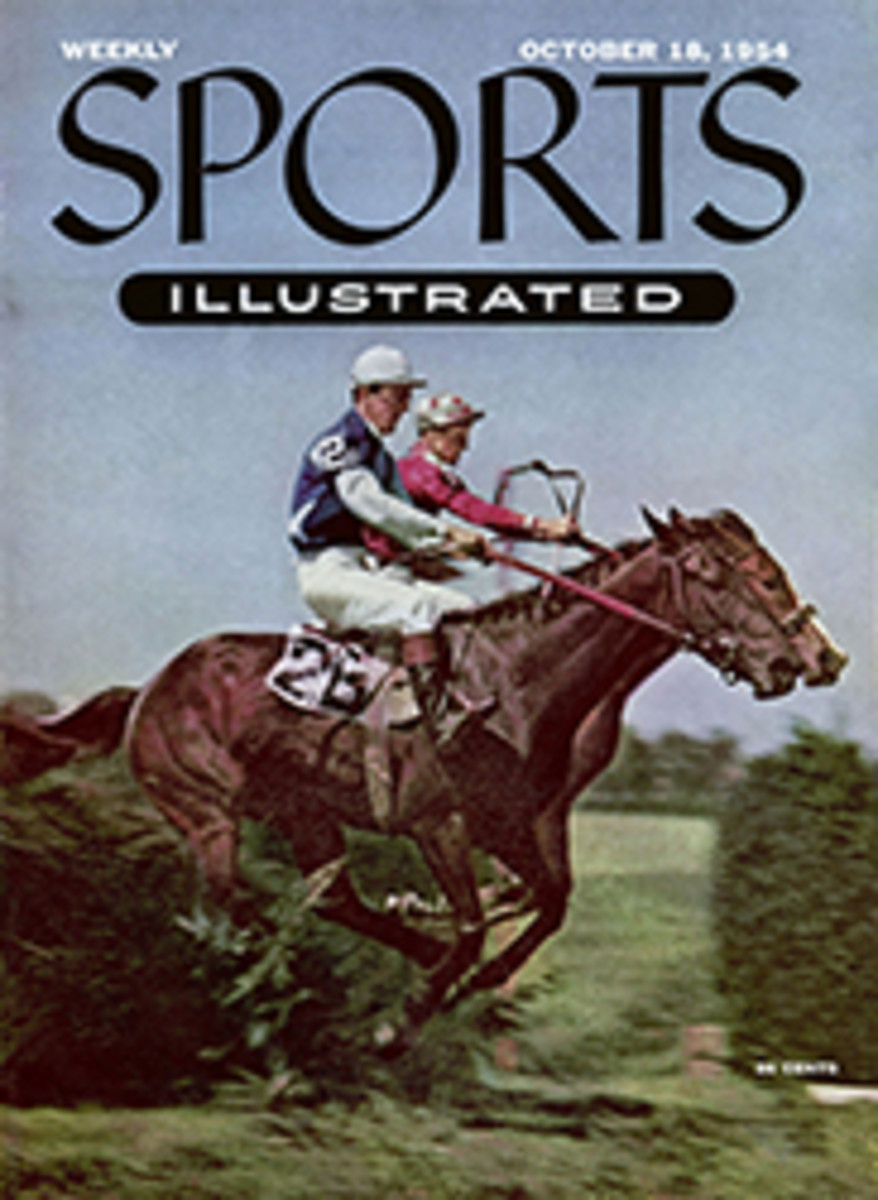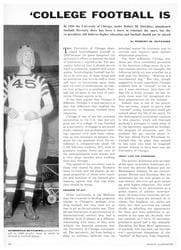
YOU SHOULD KNOW: if you are taking up riding
Ancient ancestry
Riding a horse is one of the world's most ancient sporting pastimes. The Hittite tribes were doing it back in 1400 B.C. The Assyrians, Egyptians and Greeks were all horsy people. They enjoyed it and so will you if your interest in horses goes beyond the tote board at Belmont Park.
The horse is your friend
You'll do well to remember that in this sport your instrument of enjoyment is not an inanimate bat, mallet or racket. A horse is a highly intelligent creature of moods and personality. He is by nature a willing and sociable animal. Strange objects and happenings can scare him, but meet him halfway with kindness and understanding and riding will be a pleasant experience for both of you.
The joy of riding
Riding can be fun with a partner, a group or by yourself. But you must know how to manage your mount. Each ride will be different, as no two horses are exactly the same in personality, responses or disposition. Every horse has his own quirks and the same horse can behave differently from day to day depending on weather, surroundings and his physical condition. After you've ridden a bit, you'll develop a preference for certain horses just as you do for certain people. Riding can be a never-ending new discovery if you learn properly.
Learn correctly...
Anyone can learn to ride. You're never really too young or too old. But styles in riding vary tremendously. Some are designed for highly specialized work. Others are mere faddish idiosyncrasies. The proper basic instruction will show you how to handle both yourself and your horse at a walk, trot and canter in a standard English saddle. Since riding is largely a matter of balance and control, you should have no difficulty in switching later to a specialized style. But learn the fundamentals first. As in most sports, it is largely a matter of practice and experience, but a good foundation is essential for maximum pleasure and safety.
...to avoid trouble
Don't be deceived by the well-meaning friend who tells you that riding is a cinch and there's nothing to it. Never try to teach yourself or you'll risk picking up bad habits, have a generally unpleasant time and maybe injure yourself. The untutored rider abuses himself and his mount. Many beginners find to their chagrin that the horse they draw at the stable is a clever soul who, once he gets the idea that you're not properly taught, will pull every dodge in the book to make it easy for himself and hard for you. Take him into a ring and he'll doze quietly in the center. He may wander out to the gate and stare wistfully back at his stall or trot out to the park and stop to lunch on the greenery. You'll get a good ride from your horse only when you've learned to ask him for it.
Where to learn
Most cities and towns have riding academies where instruction is available. Classified directories will give you their locations. Many academies offer both private and group lessons. Schools and camps usually have only group lessons and smaller stables with a limited stock of horses are apt to provide private tutoring only. The quality of horses and teachers varies widely. Consult your horsy friends about the best place, or go down and look around for yourself. Observe how much attention the students get from their instructor and how it is given. Take the physical aspects of the place into consideration too. An enclosed ring means you can ride in all kinds of weather, a lighted ring means you can ride at night after work, and so forth.
Private lessons
Private lessons are best at the beginning as you'll get special attention and instruction will be tailor-made to your needs. It's expensive—maybe $5 to $8 an hour—but well worth it. For small children and timid adults, private instruction is even more necessary. Take several short lessons a week at the start instead of fewer long ones, so that your muscles can get used to the idea. The time it takes to learn depends completely on you, but after 10 hours of private tutoring most neophytes can start, stop, turn, post a trot, sit a canter and use hands, feet, legs, weight and voice, albeit imperfectly. No one is a good rider at this stage. At this point you may want to join a class. These consist usually of five to 15 riders and cost about $3 to $4 an hour. You may not get individual attention, but you will be helped and corrected while gaining experience in handling a horse in a group. Many stables have graded classes, so you can move up as quickly as you learn. If you start taking lessons in the fall, you should be able to venture forth with some confidence when spring appears.
Clothes
Riding clothes are designed for comfort and safety. Proper clothes are worth the investment. Make sure your footwear fits snugly. Don't use loafers as the heel may slip through the stirrup. The high-heeled cowboy boot is not designed for correct position in the English type stirrup and position is important, for it adds to proper balance. Pants should fit snugly to avoid friction and chafing on the knee and leg. Get used to wearing gloves, preferably leather. They'll prevent blisters in warm weather and are necessary when it turns cold. Any type of sport shirt will do. That goes for headgear, too. For your first *outfit, cotton gabardine jodhpurs and low-priced jod boots will be best. These shouldn't cost you more than $25.
Group riding
Courtesy and alertness are important. Stay at least a length behind the horse in front of you. It's dangerous to get closer. You may get kicked. Watch your mount for nipping or kicking and punish him immediately. Don't urge your horse on loudly or you may upset another, more spirited horse in the group. Never gallop up behind another horse. Pass other horses at a slow speed or you may frighten them into bolting. If you're on a path, move over to let others pass and keep the horse's head toward the side on which he will be passed. When out of the saddle, avoid sudden movements that may scare your mount.
Take care
You needn't be afraid of horses. Just be careful. Don't sneak up on your horse suddenly or unannounced. He may strike out with a hoof if he is startled; his first reaction is a defensive one. Learn how to lead your horse properly. Even if he steps on your foot by mistake, it will hurt. Don't wrap the lead strap around your hand. You might sprain it if the animal shies from something. When feeding him a carrot or a lump of sugar, hold it in the flat palm of your hand and he'll eat nicely. Hold food up to him in your fingers and you may lose one.
Books
No book can teach you to ride, but reading may help you understand what you're doing and why. Some of the standbys are Horsemanship for Beginners by Jean Slaughter ($3.75, Knopf), Common Sense Horsemanship by Capt. Vladimir S. Littauer ($7.50, Van Nostrand), Riding and Schooling Horses by Brig. Gen. Harry D. Chamberlin ($5.00, Van Nostrand) and Teaching the Young to Ride by Margaret Cabell Self ($3.00, Barnes). Just remember to use good judgment when you ride. Don't overrate your ability, avoid recklessness and you'll find that riding can be one of your most rewarding pleasures.

